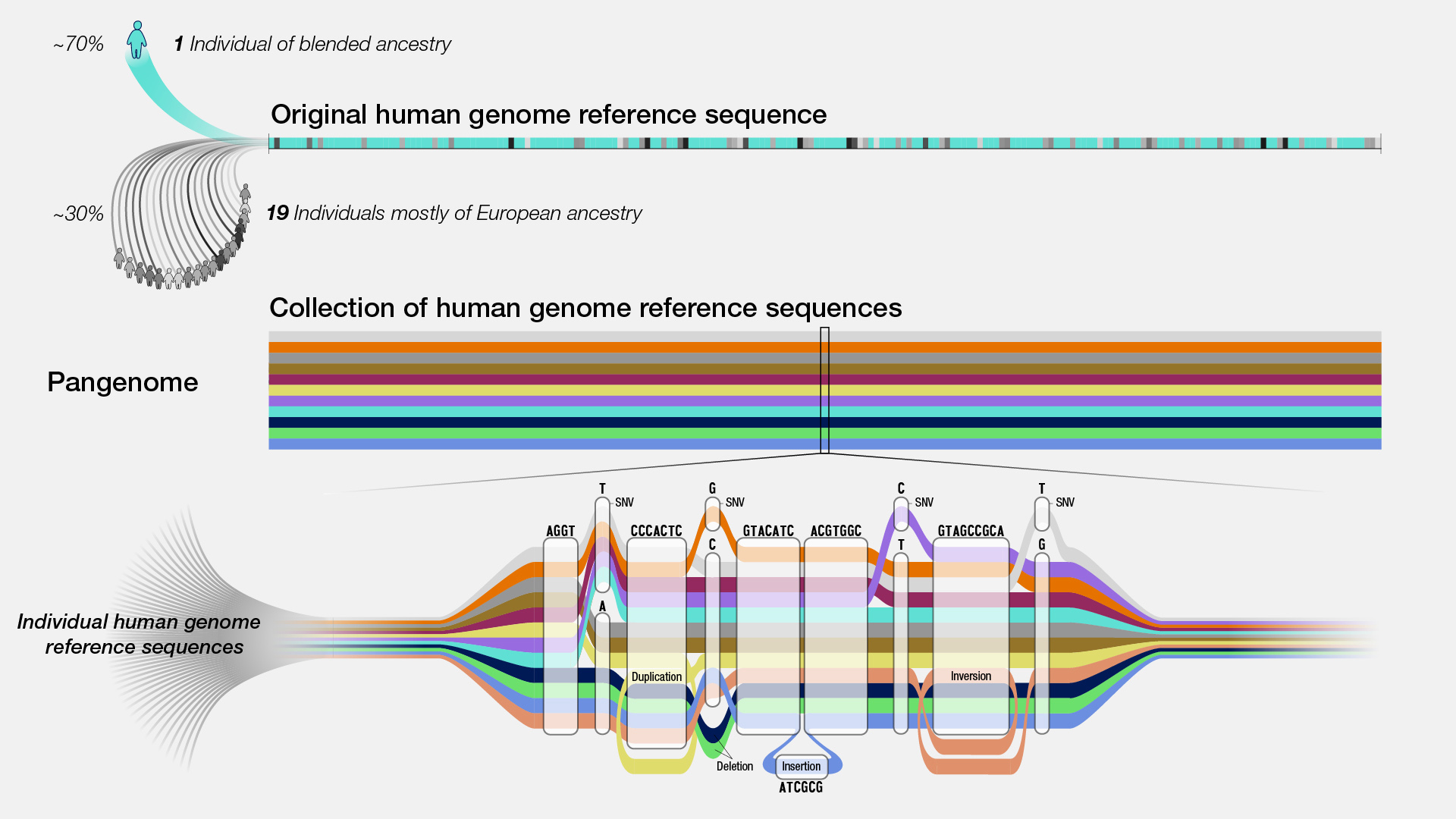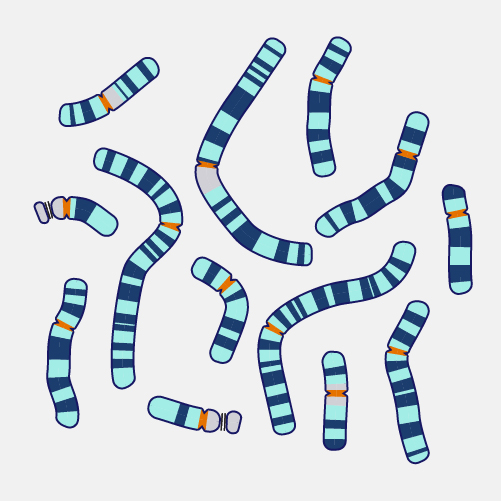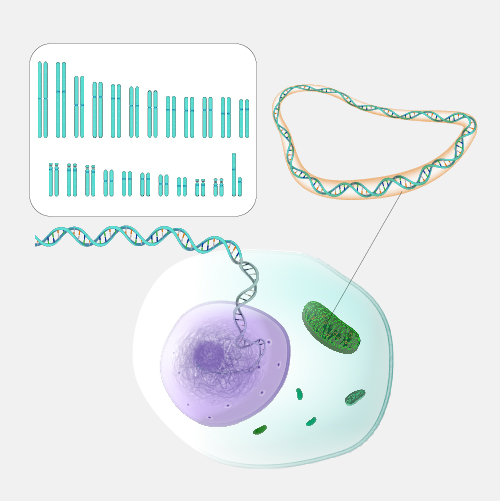
Pangenome
Definition
A pangenome is a collection of genome sequences from many individuals of the same species. Scientists generate pangenomes to capture the breadth of genomic variation across populations and use it as a “reference” to compare other genomes to. Researchers can detect genomic variants by comparing a new individual’s genome to a reference genome.

Narration
When the Human Genome Project mapped the human genome most of the sequence came from a single person and that became the first human genome reference. Researchers have been using this reference sequence for comparing genomes, mapping genes, and looking for important differences among people that might give us clues about our health and risk for diseases. But because humans are genetically diverse, a reference genome made from just a handful of individuals doesn’t capture the full extent of genomic variation that exists across human populations. This means that some genes or variants of those genes may go undetected in some people potentially causing biologically or medically important information to be overlooked. Researchers have recently created a first draft of a human pangenome that makes for a better reference and can help them detect more genetic variants from people all over the world.





